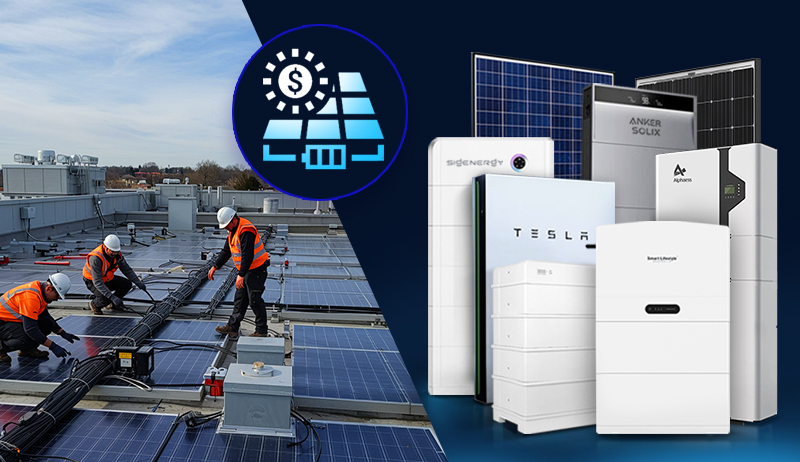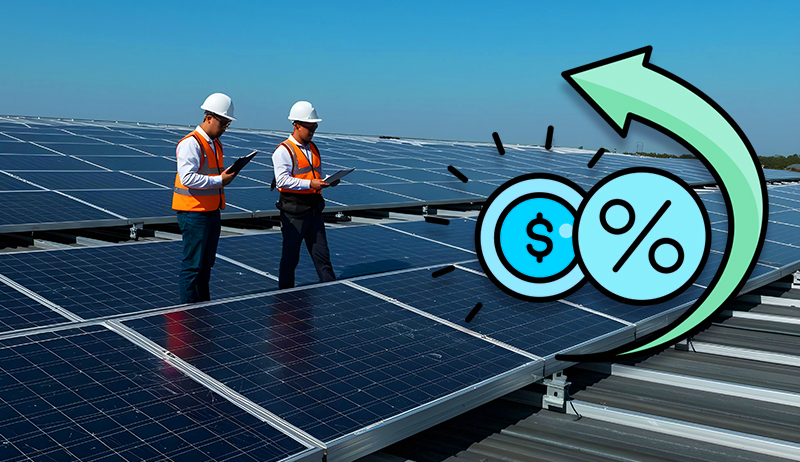Garuda Indonesia Takes Flight with Sustainable Aviation Fuel (SAF): A Greener Path for Indonesian Aviation
Garuda Indonesia, the national flag carrier of Indonesia, is soaring towards a more sustainable future by embracing Sustainable Aviation Fuel (SAF).
This environmentally friendly alternative to traditional jet fuel offers a significant reduction in greenhouse gas emissions, paving the way for a cleaner and greener aviation industry in Indonesia.
Pioneering the Use of SAF in Indonesia
In October 2023, Garuda Indonesia marked a historic milestone by conducting its first commercial flight powered by SAF. This landmark achievement, in collaboration with Pertamina, the Indonesian state-owned oil and gas company, showcased the airline’s commitment to reducing its environmental footprint and promoting sustainable aviation practices.
The successful test flight, using Pertamina’s Bioavtur brand of SAF, demonstrated the fuel’s effectiveness and compatibility with existing aircraft engines. This paves the way for wider adoption of SAF by Garuda Indonesia and other airlines operating in the region.
History of Implementation Sustainable Aviation Fuel (SAF) in Garuda Indonesia
Garuda Indonesia Takes Flight with Sustainable Aviation Fuel (SAF): A Historical Timeline
Garuda Indonesia, Indonesia’s national flag carrier, has recently taken significant steps towards a more sustainable future by embracing Sustainable Aviation Fuel (SAF). While still in its early stages, the airline’s commitment to SAF marks a promising chapter in its history and paves the way for a greener Indonesian aviation industry.
Pre-2023: Laying the groundwork for sustainability
While the official use of SAF began in late 2023, Garuda Indonesia’s dedication to environmental responsibility stretches back further. The airline’s “Green Strategy” implemented in 2007 and updated in 2016 outlines its commitment to minimizing its environmental impact through various initiatives, including:
- Fuel efficiency programs: Investing in fuel-efficient aircraft and optimizing flight operations to reduce fuel consumption.
- Waste reduction and management: Implementing programs to reduce waste generation and responsibly manage waste onboard and at ground facilities.
- Biodiversity conservation: Supporting conservation efforts for endangered species and habitats in Indonesia.
These initiatives laid the foundation for Garuda Indonesia’s later embrace of SAF as a key strategy for further reducing its environmental footprint.
October 2023: A historic milestone
The landmark moment arrived in October 2023 when Garuda Indonesia conducted its first commercial flight powered by SAF. This historic flight, in collaboration with Pertamina, the Indonesian state-owned oil and gas company, used Pertamina’s Bioavtur brand of SAF.
The successful test flight demonstrated the compatibility of SAF with existing aircraft engines and its potential to significantly reduce greenhouse gas emissions. This paved the way for wider adoption of SAF by Garuda Indonesia and other airlines in the region.
Post-2023: Moving towards a sustainable future
While the use of SAF is still in its initial stages, Garuda Indonesia remains committed to expanding its implementation.
The airline plans to:
- Increase the frequency of SAF-powered flights on select routes.
- Explore partnerships with other SAF producers to secure a more stable supply of the fuel.
- Advocate for government policies and incentives to support the wider adoption of SAF in Indonesia.
These efforts signify Garuda Indonesia’s long-term vision for a sustainable future.
By embracing SAF, the airline aims to:
- Reduce its greenhouse gas emissions: SAF can offer up to an 80% reduction in emissions compared to conventional jet fuel, significantly contributing to mitigating climate change.
- Improve air quality: SAF burns cleaner, leading to lower emissions of harmful pollutants like particulate matter and nitrogen oxides, benefiting communities around airports and flight paths.
- Enhance energy security: SAF production can utilize renewable sources like plant oils and waste biomass, reducing reliance on fossil fuels and promoting energy independence.
Garuda Indonesia’s pioneering efforts with SAF not only benefit the environment but also position Indonesia as a leader in adopting clean aviation technologies. As the airline continues to soar with SAF, it leaves behind a trail of hope for a more sustainable future for Indonesian aviation and beyond.
The use of SAF in Garuda Indonesia is a recent development, and comprehensive data for a historical timeline is still limited. However, the information provided here highlights the airline’s significant steps towards a sustainable future and its potential impact on the Indonesian aviation industry.
Garuda Indonesia’s SAF Milestones: A Timeline
Garuda Indonesia, Indonesia’s flag carrier, is taking flight towards a greener future with its commitment to Sustainable Aviation Fuel (SAF).
Here’s a timeline of their key milestones so far:
| Milestone | Date | Description | Image |
|---|---|---|---|
| Green Strategy Implementation | 2007, Updated 2016 | Sets the foundation for sustainability through fuel efficiency programs, waste reduction and management, and biodiversity conservation initiatives. | |
| First Commercial SAF Flight | October 2023 | Collaborates with Pertamina’s Bioavtur brand, marking a historic moment for Indonesian aviation. | |
| Increased SAF Flight Frequency | Ongoing | Aims to expand the use of SAF on select routes, demonstrating a commitment to scaling up its implementation. | |
| Partnership Exploration for Stable SAF Supply | Ongoing | Actively seeks collaborations with other SAF producers to ensure a reliable source of this sustainable fuel. | |
| Advocacy for SAF Policy and Incentives | Ongoing | Pushes for government support through policies and incentives to encourage wider adoption of SAF in Indonesia. |
Additional Notes:
- While comprehensive data on the percentage of SAF used compared to fossil fuel is currently unavailable, Garuda Indonesia is working on improving data collection and reporting for future transparency.
- Stay updated on Garuda Indonesia’s SAF journey through their website, press releases, media coverage, and annual sustainability reports.
Garuda Indonesia’s commitment to SAF holds immense potential for reducing the environmental impact of aviation in Indonesia and beyond. These milestones mark the beginning of a promising journey towards a more sustainable future for the airline and the entire industry.
Benefits of SAF for Garuda Indonesia and the Environment
SAF offers a range of environmental benefits compared to conventional jet fuel:
- Reduced greenhouse gas emissions: SAF can reduce lifecycle greenhouse gas emissions by up to 80% compared to traditional jet fuel. This significantly contributes to mitigating the climate impact of the aviation industry.
- Improved air quality: SAF burns cleaner than conventional jet fuel, leading to lower emissions of harmful pollutants like particulate matter and nitrogen oxides. This can improve air quality, particularly around airports and in communities close to flight paths.
- Enhanced energy security: SAF can be produced from various renewable sources, such as plant oils and waste biomass. This reduces reliance on fossil fuels and contributes to energy security in Indonesia and beyond.
Challenges and Opportunities for SAF Adoption
While the potential of SAF is undeniable, its widespread adoption faces several challenges:
- Higher cost: SAF is currently more expensive than conventional jet fuel, making it less commercially viable for airlines. Government policies and incentives are needed to bridge the cost gap and encourage SAF uptake.
- Limited availability: The production and supply of SAF are still in their early stages, making it difficult for airlines to secure sufficient quantities of the fuel. Increased investment in SAF production facilities is essential to address this challenge.
Despite these challenges, Garuda Indonesia’s commitment to SAF demonstrates a growing momentum towards sustainable aviation in Indonesia. The airline’s leadership in this area not only benefits the environment but also positions Indonesia as a pioneer in the adoption of clean aviation technologies.
Looking Ahead: A Sustainable Future for Indonesian Aviation
Garuda Indonesia’s initiative with SAF is a significant step towards a more sustainable future for Indonesian aviation.
By working together with stakeholders like Pertamina, the government, and other airlines, Indonesia can pave the way for a cleaner and greener air travel industry. This will not only benefit the environment but also contribute to the country’s economic growth and development.
As Garuda Indonesia continues to soar through the skies with SAF, it leaves behind a trail of hope for a more sustainable future, not just for Indonesia but for the entire aviation industry worldwide.
Additional Resources:
- Garuda Indonesia website: https://www.garuda-indonesia.com/
- Pertamina website: https://www.pertamina.com/
- International Air Transport Association (IATA): https://www.iata.org/
https://www.exaputra.com/2024/01/garuda-indonesia-takes-flight-with.html
Renewable Energy
ACORE Applauds Maryland Gov. Moore’s New Executive Order on Energy Affordability and Reliability
-
Grid Infrastructure -
Policy -
Siting & Permitting Reform -
Technology -
Press Releases
ACORE Applauds Maryland Gov. Moore’s New Executive Order on Energy Affordability and Reliability
ACORE Applauds Maryland Gov. Moore’s New Executive Order on Energy Affordability and Reliability
FOR IMMEDIATE RELEASE
Dec. 19, 2025
WASHINGTON, D.C. — The American Council on Renewable Energy (ACORE) issued the following statement from ACORE President and CEO Ray Long in response to Governor Wes Moore’s announcement of new initiatives to build an affordable and reliable energy future for Maryland.
“ACORE applauds Gov. Wes Moore for setting forth a new series of energy initiatives that seek to stabilize energy bills while ensuring grid reliability and efficiency for Marylanders. In particular, ACORE commends key provisions in the order to increase the deployment of advanced transmission technologies; streamline the siting and permitting of high-voltage transmission, energy storage, and other infrastructure; advance wholesale market reforms; and more. As the country enters a new era of electricity demand, initiatives like Gov. Moore’s will facilitate significant progress toward building a modern and reliable grid needed to maintain economic competitiveness and keep the lights on,” said ACORE President and CEO Ray Long.
###
ABOUT ACORE
For over 20 years, the American Council on Renewable Energy (ACORE) has been the nation’s leading voice on the issues most essential to clean energy expansion. ACORE unites finance, policy, and technology to accelerate the transition to a clean energy economy.
For more information, please visit http://www.acore.org.
Media Contacts:
Stephanie Genco
Senior Vice President, Communications
American Council on Renewable Energy
communications@acore.org
The post ACORE Applauds Maryland Gov. Moore’s New Executive Order on Energy Affordability and Reliability appeared first on ACORE.
https://acore.org/news/acore-statement-on-gov-wes-moores-new-energy-executive-order/
Renewable Energy
Meat–It’s What’s for Dinner, if You Don’t Care about the Animals or the Planet
 We often hear meat-eaters say things like, “If beef isn’t good, why do the manufacturers of plant-based burgers try so hard to make their burgers taste like real meat?”
We often hear meat-eaters say things like, “If beef isn’t good, why do the manufacturers of plant-based burgers try so hard to make their burgers taste like real meat?”
There is no doubt that cow and pig meat tastes and smells great; every vegan on Earth will tell you that.
The problem lies elsewhere, in a) the environmental impact of clearing the rainforests to make room for more cows, and b) the cruelty inherent in factory farming and the slaughtering of the animals.
Meat–It’s What’s for Dinner, if You Don’t Care about the Animals or the Planet
Renewable Energy
FAQs: Your Most Common Commercial Solar Questions Answered
The post FAQs: Your Most Common Commercial Solar Questions Answered appeared first on Cyanergy.
https://cyanergy.com.au/blog/faqs-your-most-common-commercial-solar-questions-answered/
-
Climate Change4 months ago
Guest post: Why China is still building new coal – and when it might stop
-
Greenhouse Gases4 months ago
Guest post: Why China is still building new coal – and when it might stop
-
Climate Change2 years ago
Spanish-language misinformation on renewable energy spreads online, report shows
-

 Greenhouse Gases2 years ago
Greenhouse Gases2 years ago嘉宾来稿:满足中国增长的用电需求 光伏加储能“比新建煤电更实惠”
-
Climate Change Videos2 years ago
The toxic gas flares fuelling Nigeria’s climate change – BBC News
-

 Climate Change2 years ago
Climate Change2 years ago嘉宾来稿:满足中国增长的用电需求 光伏加储能“比新建煤电更实惠”
-

 Carbon Footprint2 years ago
Carbon Footprint2 years agoUS SEC’s Climate Disclosure Rules Spur Renewed Interest in Carbon Credits
-
Climate Change2 years ago
Why airlines are perfect targets for anti-greenwashing legal action








 Full energy assessment
Full energy assessment



